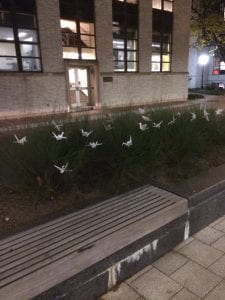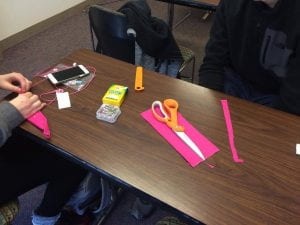When you’re living with anxiety, there are times when it feels as if everything is just a second away from crashing down around your ears. You feel as if you have to put dozens of safeguards in place and quadruple check everything so that things don’t fall apart. This is the sort of feeling that I wanted to get across with my game.
There are already plenty of games that make the player feel anxious, but there aren’t many that I’ve found that include the other major aspect of my game. From the very beginning, I wanted each player to reach a point where they would realize that all of the things that they were preparing for would likely never happen to them, and that they were trying to protect themselves from nothing.

The first iteration of my game was played as follows: each player got a hand of 5-7 Preparation cards (depending on the number of players, from 2-4) and one Critical Events card. The Critical Events card had two events listed on it, and under each event was a list of two preparations. The players were told that if one of those events came up and they were not prepared for it, they would have to draw until they had the necessary cards. The ultimate goal was to discard every card in their hand.
Each round, each player would draw a Preparation card and have the option to either discard two cards or trade one card with another player. At the end of the round, an Event card would be turned over. The players would make sure that the event was not one off their Critical Events cards, nothing would happen. The goal of this ruleset was to encourage players to horde Preparation cards out of fear of an event coming up that they weren’t prepared for, and then to slowly come to the conclusion that they don’t need to prepare for all of these awful things that would never happen.
This version of the game had both positives and negatives. On the positive side, I had a very simple set of mechanics that generally got people to the conclusion that I wanted them to reach. On the less positive side, the game was not engaging enough to make people feel anxious about losing, which somewhat undermined the effectiveness of it.
The second version of the game was based on the advice I got from some of my playtesters. Each Critical Events card has two events on it, and so I created Event cards for one event from each Critical Event card. I also added Perparation cards that were related to the Event cards that were already in the deck (but didn’t put new events on any of the Critical Event cards). This version worked better as a game, but it failed to get across the same point as the first iteration.
The third iteration of this game is the one that I’m the most excited for. I added several cards into the Event deck that made certain players (the one with the least cards in their hand or the players without a certain Preparation card, for example) draw extra preparation cards. This way, the outcome of the game is not predetermined and the players feel like they have some agency over the outcome. I also removed the new Event cards.
This is the version that I am most happy with, because it keeps the original concept while making the game feel more engaging. It isn’t perfect, and going forward, I would like to continue to work on this to add more to the second phase of the game, where the players realize that the Critical Events aren’t in the Event deck. At the moment, the game is very shallow and doesn’t offer good answers for those looking for ways of coping with anxiety.
When creating this piece, I believe I was most heavily influenced by Yoko Ono’s scores. There are are many of them that purposefully make the participants uncomfortable. The scores aren’t necessarily enjoyable, but they make a strong point, which is something that I hope I have accomplished or will eventually be able to accomplish with this game. I also somewhat had projects like Tekken Torture Tournament in mind while working on this, as games like those don’t just depict something (in that case the much simpler sensation of pain), but actively make the player feel it, such as how my game aims to not just show the player what happens in my mind during high anxiety days, but also make them feel the uncertainty and stress.
This is one of the two pieces in this class that I am most proud of, the other being my crane piece. Unlike the other pieces I made for this class, I feel that these had strong central mechanics and a distinct end goal, and to various extents, I believe that they were successful. Working on these projects also made me think about game design in a very different way than I am used to. Instead of starting with a story and fitting mechanics to it, these works have a central mechanic that is in itself almost a narrative element. This streamlining, more than anything, is what I am happy to have gotten out of this course and what I hope to continue to incorporate in my work in the future.


